Late last year, on Dec 5th, US Swap Data Repositories (SDRs) went live with CFTC’s amended swap data reporting framework (a.k.a CFTC re-write). This incorporates CPMI-IOSCO harmonised data elements (e.g. UTI and UPI) and introduces new data elements.
For CFTC Part 43 public dissemination, there are two very interesting new data elements:
- Trading venue is now published with each transaction
- Package identifiers now signify if the transaction is part of a package
Let’s look at what this data shows in Clarus SDRView for a few selected product types.
Trading Venue / Platform Id
Every transaction record now has a platform identifier field populated with ISO market identifier codes, which are known as MICs. This is great as it means we can identify on which trading venue a trade is executed and answer one of the most common questions, is the trade a client trade or a dealer-to-dealer trade. D2C or D2D?
Let’s look at USD Interest Rate Swaps (all reference indices, e.g. Libor, BSBY, Term SOFR, …) traded in the last 10 business days, segmented by platform id.
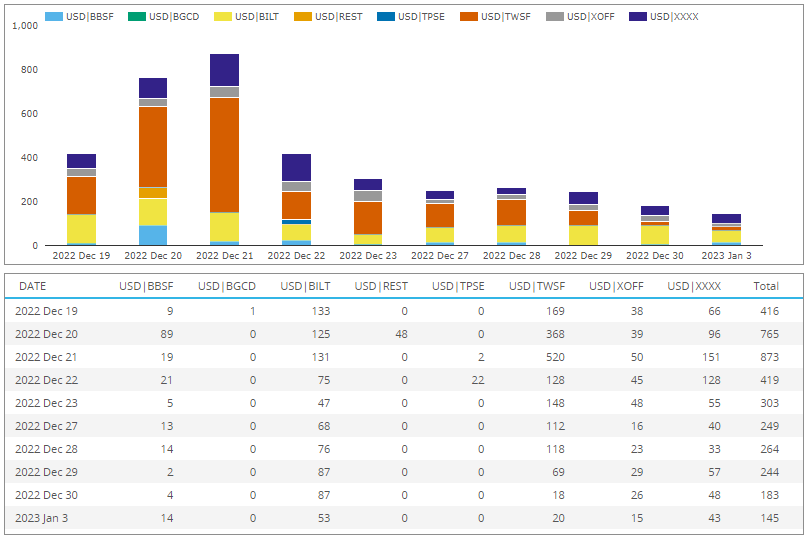
- TWSF, Tradeweb SEF with the most trades per day
- (USD Libor is coming to an end, so the majority of these are compression packages and not new risk)
- BILT, XOFF and XXX are all platform identifiers for off exchange trades (so not on a regulated venue)
- BBSF, Bloomberg SEF with trades each day, again mostly compression packages
- REST, is the NEX Reset risk optimisation service
- TPSE, is TP SEF, with these trades likely from TP-Matchbook, another risk optimisation service
Overnight Index Swaps
Let’s now swtich to OIS Swaps, where SOFR has taken over from Libor, while Fedfunds is the other major reference index.
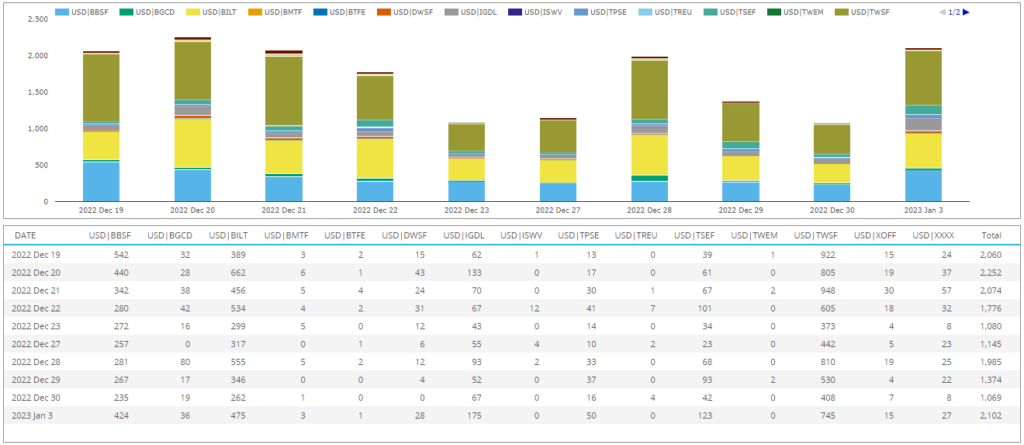
A lot more trading platforms, TWSF, BBSF and BILT (Off venue) with the highest number of trades.
Focusing on the D2D platforms, from left to right, we see:
- BGCD, BGC Derivative Markets L.P.
- DWSF, Dealerweb SEF LLC
- IGDL, ICAP Global Derivatives Ltd
- ISWV – ICAP Global Derivatives Ltd – Voice
- TPSE – TP SEF Inc
- TSEF – Tradition SEF
The platform identifier allows us to easily seperate trades on D2C venues (TWSF, BBSF) from D2D venues (above list) and off venue, and then drill-down to the trade records to compare execution timestamps, trade size and price.
USD Swaptions
The same table for USD Swaptions.
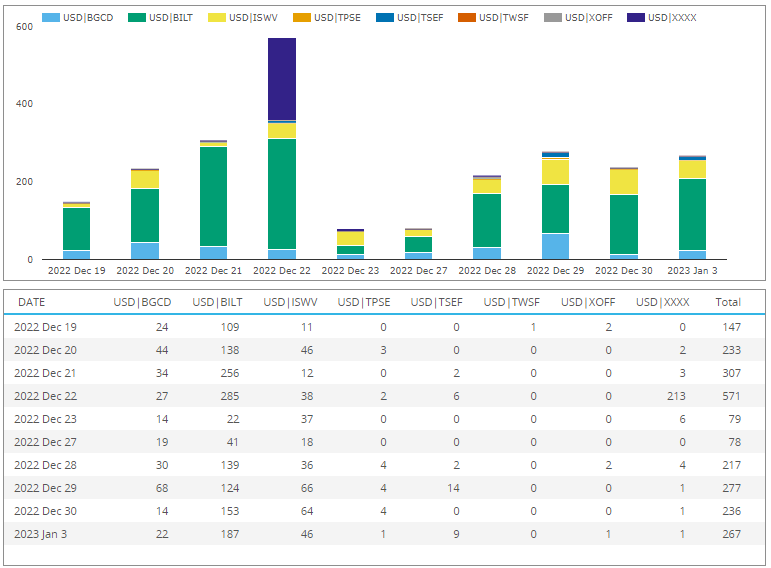
Shows trading is mostly off venue or on ICAP (Voice) or BGC (assume also voice brokered), with some trades at TPSE and TSEF.
CDS Index
Switching now to CDX, the three main indices, IG, HY and EM.
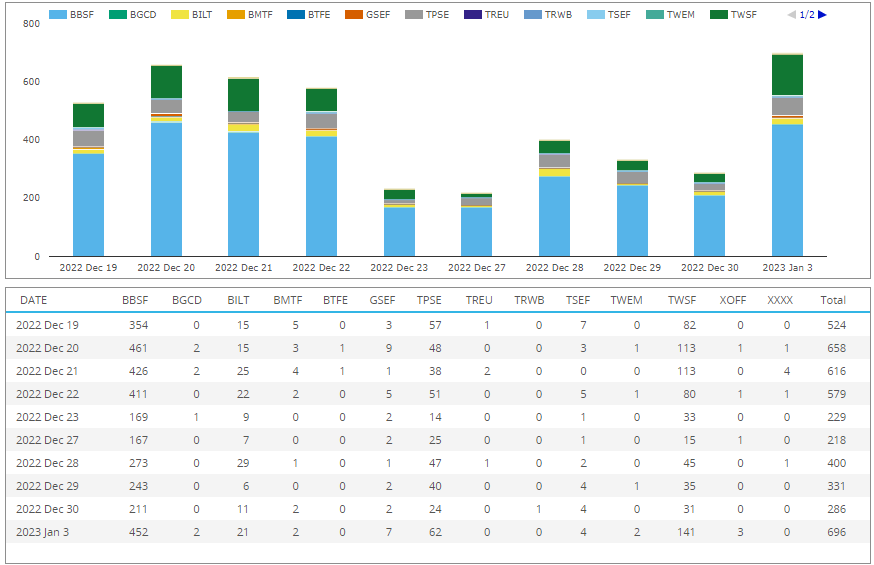
BBSF and TWSF with most trades, not a lot off venue, TPSE the most on D2D venues.
Non-Deliverable Forwards
NDFs in the 4 largest currency pairs, USD/BRL, USD/INR, USD/KRW, USD/TWD.
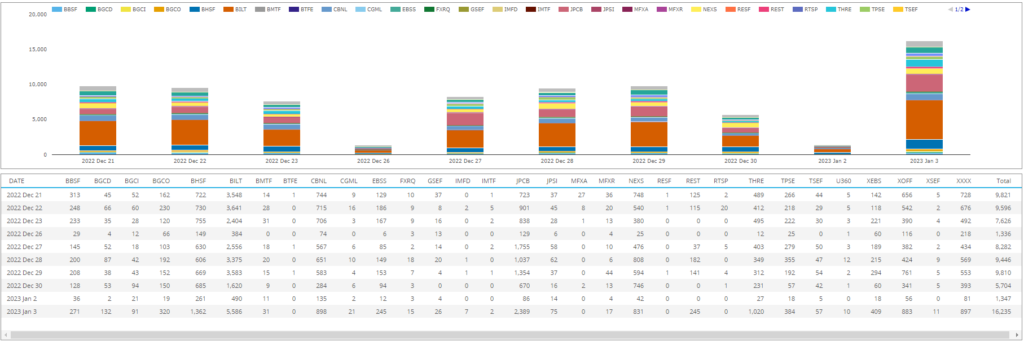
A huge number of venues and probably not very legible on your screen, but again off exchange is the largest, with good volumes in several platform names that we have not seen above:
- BHSF, CBOE SEF LLC
- CBNL, Citibank N.A. London
- EBSS, EBS Service Company Ltd
- JPCB, JPMorgan Chase Bank N.A. London
- THRE, Refinitiv US SEF LLC
- XEBS, EBS UK MTF
We could look at other products, but let’s now move onto packages.
Package Identifiers
The new package identifier data element specifies if a transaction is executed as part of a package with more than one transaction.
Selecting a low volume product type, in this case USD Inflation Swaps:
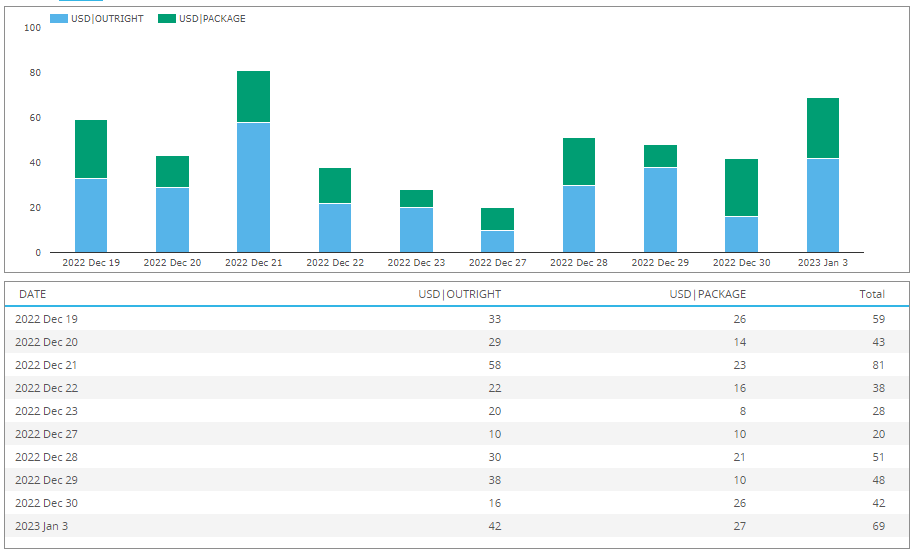
We see that trades are either Outright (no package indentier set) or Package (so transacted at the same time as other transactions) with similar trade counts.
There is no identification of the type of package (Curve, Fly, etc) but drilling down on the trade record would show a package spread or price on each transaction, which provides a clue as to the type of package.
Packages for USD OIS
As our customers would know, in Clarus SDRView we have always identified granular package types for IR Swaps. So this new data element simply helps in our identification.
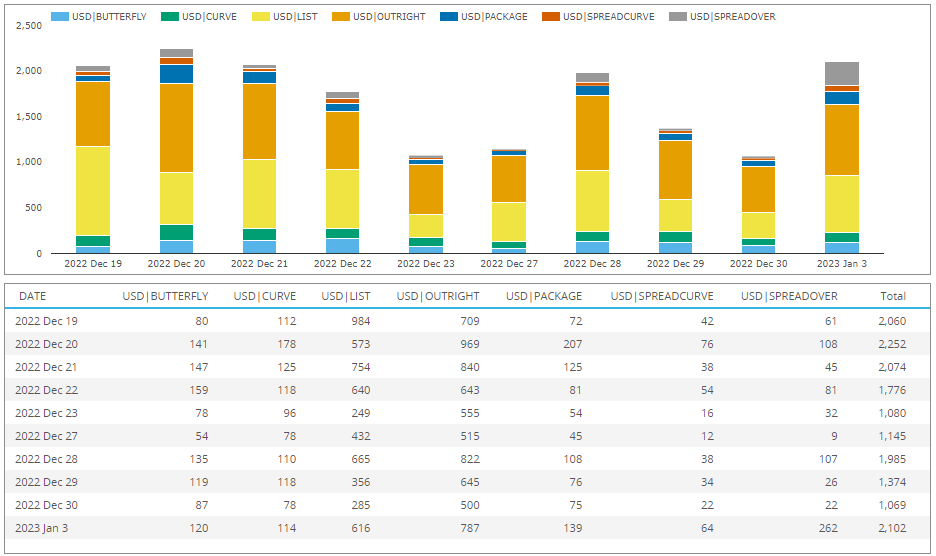
- Butterfly and Curve, two of the most common packages traded
- List trading with lots of transactions
- Outrights the majority of trades
- Spreadovers and SpreadoverCurves (over UST)
- Package, where we have not identified the granular type (a work in progress, as with more analysis these are likely to be one of the other types above or new types we should introduce)
In SDRView Professional, our real-time trade list now shows the Platform code:
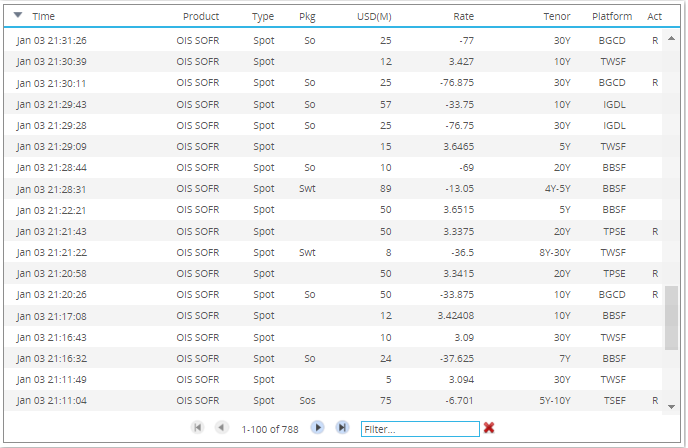
That’s It for today
A few charts and tables to show the new data.
Platform identifiers for trading venues.
A new insight into D2D vs D2C trades.
Package identifiers and package price.
Better insight into price formation.
Rates, Credit and FX Derivatives.
A lot of data to monitor and analyse.
For more details, please contact us for a demonstration.
